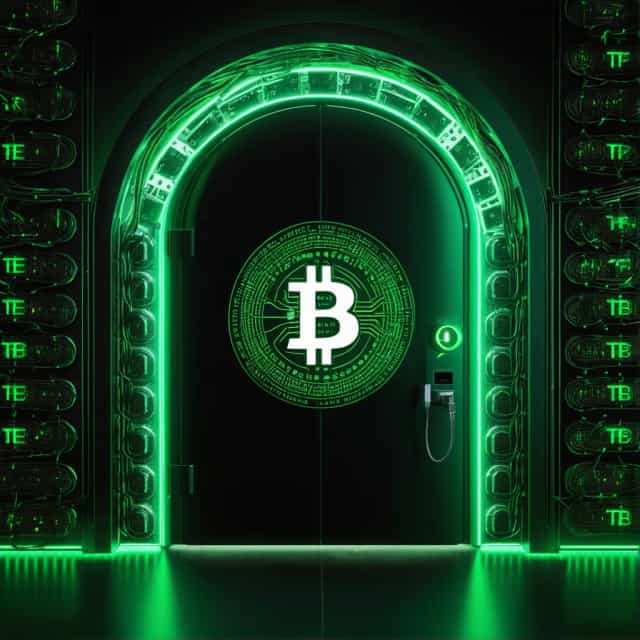
Image source: Block Media
Spark’s Six-Month Roadmap: Pioneering Institutional DeFi Growth with Fixed-Rate Lending and Enhanced Consumer Services
Elevating Institutional DeFi: Fixed-Rate Lending at the Core
Institutional-focused DeFi protocol Spark (SPK) has unveiled a transformative six-month development roadmap, designed to accelerate its evolution as a dominant player in the institutional DeFi landscape. A key highlight is the introduction of a fixed-rate lending service tailored to the preferences of institutional investors, complementing the expansion of consumer solutions and a forthcoming mobile app. These developments align with the growing on-chain presence of Web2 fintech giants like PayPal, Stripe, and Robinhood, underscoring Spark’s strategic pursuit of market leadership in the next era of decentralized finance.
2023 Performance Milestones: $3.15 Billion in Liquidity and $26 Million in ARR
Spark’s roadmap builds on a year of impressive milestones that reflect its rapid growth and success in meeting institutional demand. The protocol’s flagship offering, the "Spark Liquidity Layer (SLL)," achieved a total locked value of $3.15 billion (approximately 4.42 trillion won) in 2023. Simultaneously, Spark facilitated $500 million (around 700 billion won) in institutional loans on Coinbase’s Base chain, cementing its relevance in real-world DeFi use cases.
In addition to these achievements, the protocol delivered an average annual yield of 5.8% to its users and generated $26 million (approximately 36 billion won) in annual recurring revenue (ARR). These figures demonstrate the sustainability of Spark’s business model and highlight its growth potential as it scales further.
Fixed-Rate Lending: Addressing Institutional Preferences with Advanced Architectures
The cornerstone of Spark’s roadmap is the launch of “Spark Institutional Lending,” a fixed-rate, fixed-term lending service aimed at redefining how institutional investors engage with DeFi. Unlike the variable interest rates typical in current DeFi markets, fixed-rate lending offers the stability and predictability institutional players prefer.
By leveraging the advanced peer-to-peer matching system of Morpho V2 and integrating it with the Spark Liquidity Layer, the protocol aims to maintain liquidity exceeding $100 million (approximately 140 billion won). This strategic approach addresses liquidity fragmentation, a persistent challenge in DeFi’s peer-to-peer lending models, while ensuring scalability and efficiency.
Spark projects that its fixed-rate lending service will facilitate loan volumes of over $1 billion (approximately 1.4 trillion won) in the near future, with an anticipated launch by year-end.
Enhancing Consumer Offerings: Savings V2 and Mobile Innovation
While maintaining a strong focus on institutional markets, Spark is also advancing its capabilities for individual users. The upcoming “Savings V2” upgrade will expand the existing Spark Savings product, which currently supports only USD Coin (USDC), to include Tether (USDT) and Ethereum (ETH). Utilizing SLL’s cross-chain infrastructure, users will benefit from unified deposit interest rates across their preferred blockchain networks, adding flexibility and accessibility to their investment options. Savings V2 is set to launch on the Ethereum mainnet this October.
Complementing this upgrade, Spark plans to debut “Spark Mobile,” its first consumer-facing application, early next year. Designed to streamline the user experience, the app will simplify deposits, lending, and payment services, offering an all-in-one platform for retail users. This move aims to make DeFi more approachable for a broader audience, further enhancing Spark’s market presence.
Liquidity as a Service: Scaling Stablecoin Support and Institutional Partnerships
Spark’s innovative approach extends beyond direct lending and savings to encompass its "Stablecoin Liquidity as a Service (LaaS)" model. Leveraging the Spark Liquidity Layer, this B2B solution enables stablecoin issuers and blockchain networks to secure substantial liquidity without requiring extensive upfront incentives. A prime example of its success is Spark’s supply of $1 billion in liquidity to PayPal’s PYUSD stablecoin, demonstrating its ability to meet the liquidity needs of large institutional players.
In the fourth quarter, Spark plans to expand its LaaS initiative further by facilitating stablecoin swaps exceeding $100 million in scale. This includes collaborations with over-the-counter (OTC) desks, centralized exchanges, and decentralized platforms like Uniswap (UNI) V4, utilizing an automated trading operation model. The introduction of a fully transparent, non-custodial infrastructure positions Spark as a viable alternative to traditional finance, addressing trust issues by ensuring all transactions are securely recorded on the blockchain.
Spark’s Vision: Bridging Institutional and Retail DeFi Needs
Spark’s comprehensive six-month development roadmap serves as a testament to its ambition to redefine the DeFi landscape for both institutional and retail users. By introducing fixed-rate lending, upgrading consumer savings solutions, launching a user-centric mobile app, and scaling liquidity services, Spark is carving out a leadership role in the digital asset ecosystem.
Its commitment to transparency, innovation, and scalability ensures it is well-positioned to navigate the rapidly evolving decentralized finance landscape. As institutional adoption of blockchain technology accelerates, Spark is cementing itself as a transformative force in the next wave of financial innovation.










